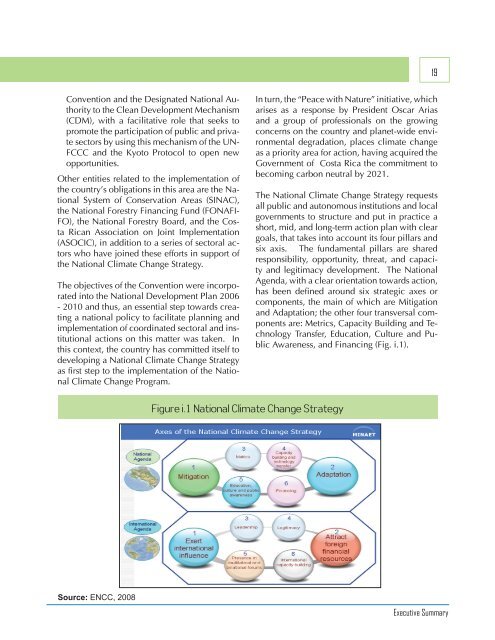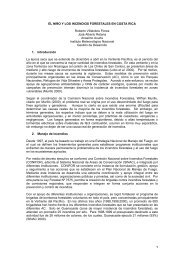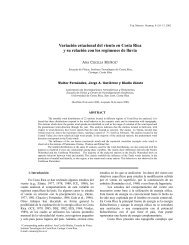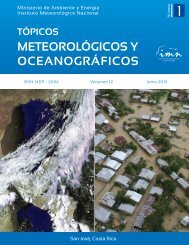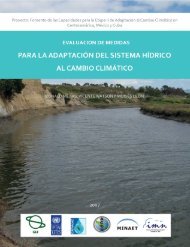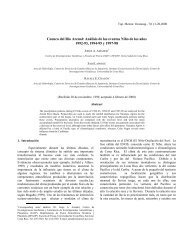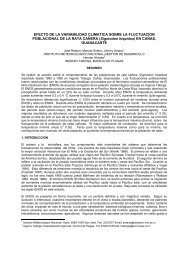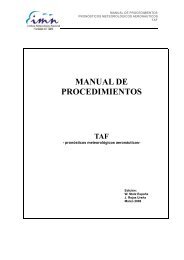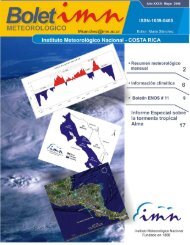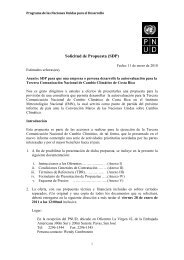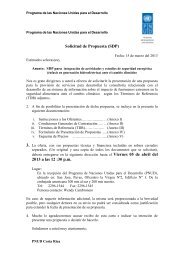descargar Documento - IMN - Instituto Meteorológico Nacional
descargar Documento - IMN - Instituto Meteorológico Nacional
descargar Documento - IMN - Instituto Meteorológico Nacional
Create successful ePaper yourself
Turn your PDF publications into a flip-book with our unique Google optimized e-Paper software.
19<br />
Convention and the Designated National Authority<br />
to the Clean Development Mechanism<br />
(CDM), with a facilitative role that seeks to<br />
promote the participation of public and private<br />
sectors by using this mechanism of the UN-<br />
FCCC and the Kyoto Protocol to open new<br />
opportunities.<br />
Other entities related to the implementation of<br />
the country’s obligations in this area are the National<br />
System of Conservation Areas (SINAC),<br />
the National Forestry Financing Fund (FONAFI-<br />
FO), the National Forestry Board, and the Costa<br />
Rican Association on Joint Implementation<br />
(ASOCIC), in addition to a series of sectoral actors<br />
who have joined these efforts in support of<br />
the National Climate Change Strategy.<br />
The objectives of the Convention were incorporated<br />
into the National Development Plan 2006<br />
- 2010 and thus, an essential step towards creating<br />
a national policy to facilitate planning and<br />
implementation of coordinated sectoral and institutional<br />
actions on this matter was taken. In<br />
this context, the country has committed itself to<br />
developing a National Climate Change Strategy<br />
as first step to the implementation of the National<br />
Climate Change Program.<br />
In turn, the “Peace with Nature” initiative, which<br />
arises as a response by President Oscar Arias<br />
and a group of professionals on the growing<br />
concerns on the country and planet-wide environmental<br />
degradation, places climate change<br />
as a priority area for action, having acquired the<br />
Government of Costa Rica the commitment to<br />
becoming carbon neutral by 2021.<br />
The National Climate Change Strategy requests<br />
all public and autonomous institutions and local<br />
governments to structure and put in practice a<br />
short, mid, and long-term action plan with clear<br />
goals, that takes into account its four pillars and<br />
six axis. The fundamental pillars are shared<br />
responsibility, opportunity, threat, and capacity<br />
and legitimacy development. The National<br />
Agenda, with a clear orientation towards action,<br />
has been defined around six strategic axes or<br />
components, the main of which are Mitigation<br />
and Adaptation; the other four transversal components<br />
are: Metrics, Capacity Building and Technology<br />
Transfer, Education, Culture and Public<br />
Awareness, and Financing (Fig. i.1).<br />
Figure i.1 National Climate Change Strategy<br />
Source: ENCC, 2008<br />
Executive Summary


